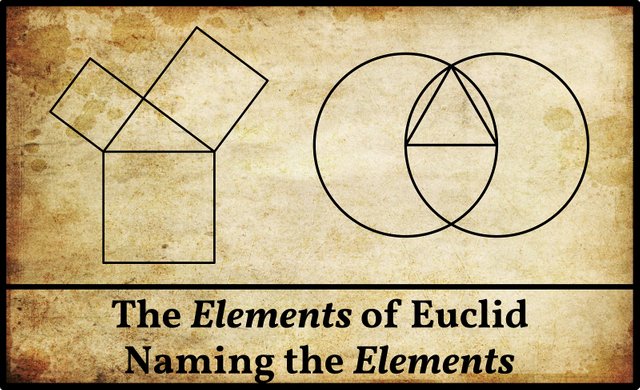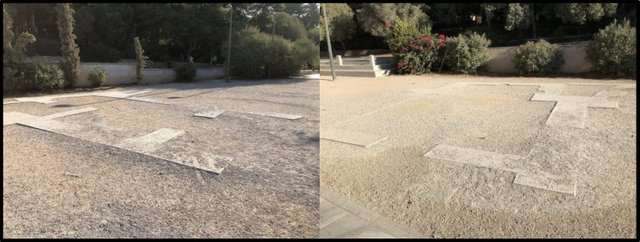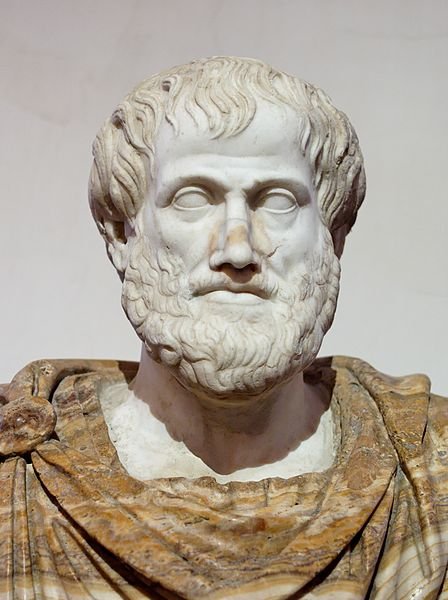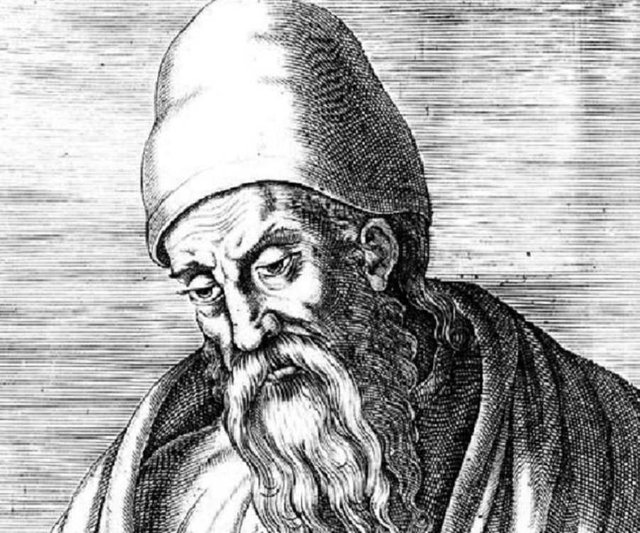
Why did Euclid call his textbook the Elements [Στοιχεια]? His 5th-century commentator Proclus gives the following reply to this question:
Of the purpose of the work with reference to the student we shall say that it is to lay before him an elementary exposition (στοιχείωσις, as it is called) and a method of perfecting (τελείωσις) his understanding for the whole of geometry. If we start from the elements, we shall be able to understand the other parts of this science; without its elements we cannot grasp its complexity, and the learning of the rest will be beyond us. The theorems that are simplest and most fundamental and nearest to first principles are assembled here in a suitable order, and the demonstrations of other propositions take them as the most clearly known and proceed from them ...
But—to inquire briefly about its title—what is the meaning of this very word στοιχείωσις and of the word στοιχεῖον from which it is derived? Some theorems we are accustomed to call “elements” (στοιχεῖα), others “elementary” (στοιχειώδη), and others do not qualify for either designation. We call “elements” those theorems whose understanding leads to the knowledge of the rest and by which the difficulties in them are resolved. As in written language there are certain primal elements, simple and indivisible, to which we give the name στοιχεῖα [Translator’s Footnote: One of the many uses of the word στοιχεῖα was to designate the letters of the alphabet.] and out of which every word is constructed, and every sentence, so also in geometry as a whole there are certain primary theorems that have the rank of starting-points for the theorems that follow, being implicated in them all and providing demonstrations for many conjunctions of qualities; and these we call “elements”. “Elementary” propositions are those that are simple and elegant and have a variety of applications but do not rank as elements because the knowledge of them is not pertinent to the whole of the science ... Propositions whose understanding is not relevant to a multitude of others or which do not exhibit any grace or elegance—these do not have the force of elementary propositions. The term “element,” however, can be used in two senses, as Menaechmus tells us. For what proves is called an element of what is proved by it; thus in Euclid the first theorem is an element of the second, and the fourth of the fifth. In this sense many propositions can be called elements of one another, when they can be established reciprocally ... An element so regarded is a kind of lemma. But in another sense “element” means a simpler part into which a compound can be analyzed. In this sense not everything can be called an element of anything [that follows from it], but only the more primary members of an argument leading to a conclusion, as postulates are elements of theorems. This is the sense of “element” that determines the arrangement of the elements in Euclid’s work, some of them being elements of plane geometry, and some elements of stereometry This also is the meaning the word has in numerous compositions in arithmetic and astronomy entitled “elementary treatises” (στοιχειώσεις). (Morrow 58-60)

Aristotle, on more than one occasion, uses the term elements is the same sense:
For just as in geometry it is useful to be practised in the elements, and in arithmetic having the multiplication table up to ten at one’s fingers’ ends makes a great difference to one’s knowledge of the multiples of other numbers too, likewise also in arguments it is a great advantage to be well up in regard to first principles, and to have a thorough knowledge of propositions by heart. (Topics 8:14, 163b23 ff)
In general, the primary elements are very easy to prove, if the definitions involved, e.g., the nature of a line or of a circle, are laid down (only the arguments that can be brought in regard to each of them are not many, because there are not many intermediate steps). (Topics 8:3, 158b35 ff)
And we give the name of “elements” to those geometrical propositions, the proofs of which are implied in the proofs of the others, either of all or of most. (Metaphysics 3:3, 998a25 ff)
We call an element that which is the primary component immanent in a thing, and indivisible in kind into other kinds, e.g. the elements of speech are the parts of which speech consists and into which it is ultimately divided, while they are no longer divided into other forms of speech different in kind from them. If they are divided, their parts are of the same kind, as a part of water is water (while a part of the syllable is not a syllable). Similarly those who speak of the elements of bodies mean the things into which bodies are ultimately divided, while they are no longer divided into other things differing in kind; and whether the things of this sort are one or more, they call these elements. The elements of geometrical proofs, and in general the elements of demonstrations, have a similar character; for the primary demonstrations, each of which is implied in many demonstrations, are called elements of demonstrations; and the primary deductions, which have three terms and proceed by means of one middle, are of this nature. (Metaphysics 5:3, 1014a26-b2)

The Elementator
As I mentioned in the preceding article in this series, later scholars rarely identified the author of the Elements by name:
So great was the prestige of the Elements in comparison not only with the work of Euclid’s predecessors but also with the other writings of Euclid that in later times the author was seldom referred to by name but instead usually by the title ὁ στοιχειωτής, “the elementator.” [Footnote: I have avoided the awkward English term by uniformly translating ὁ στοιχειωτής as “the author of the Elements” ...] (Morrow xxii)
And that’s a good place to stop.

References
- Jonathan Barnes: The Complete Works of Aristotle, Volumes 1 & 2, Princeton university press, Princeton, NJ (1991)
- Richard Fitzpatrick (translator), Euclid’s Elements of Geometry, University of Texas at Austin, Austin, TX (2008)
- Thomas Little Heath (translator & editor), The Thirteen Books of Euclid’s Elements, Second Edition, Dover Publications, New York (1956)
- Johan Ludvig Heiberg, Heinrich Menge, Euclidis Elementa edidit et Latine interpretatus est I. L. Heiberg, Volumes 1-5, B G Teubner Verlag, Leipzig (1883-1888)
- Glenn R Morrow (translator), Proclus: A Commentary on the First Book of Euclid’s Elements, Princeton University Press, Princeton, NJ (1970)
Image Credits
- House of Proclus, Dionysiou Areopagitou Street, Athens: © gus619USA, Creative Commons License
- Aristotle: Lysippos (original sculptor), Museo Nazionale Romano di Palazzo Altemps, Rome, Jastrow (photographer), Public Domain
- Anonymous Woodcut of Euclid (1584): Public Domain
Online Resources
